Positive Progress: 3 Trends in Wastewater Treatment


By Ralph Exton
Water has become one of the foremost challenges affecting the world today. In developing countries, millions of people lack access to clean, safe water. Weather extremes, such as drought are creating dangerous situations; meanwhile, a new released report predicts that by year 2060, more than a billion people worldwide will live in cities at risk of major flooding as a result of climate change.
Then there’s the rapid population growth and economic development in regions, such as the Middle East, where water resources are being pushed well beyond natural limits. And as cities’ aging piping and distribution infrastructure continues to crumble, trillions of gallons of water are lost.
Municipalities in particular are taking the brunt of these challenges. Yet, I believe some of the greatest opportunities for solving the problems exist within their wastewater treatment plants. Last month, leaders in the global water sector convened in Munich, Germany, for the 50th anniversary of IFAT – an influential conference for innovation in water, sewage, waste and raw materials management. Three wastewater treatment trends – and solutions – dominated the discussion.
Water reuse: Closing the gap between treatment and reuse
It is critical that we seek to spur increased adoption of water reuse – a strategy that allows the world to take advantage of a water source constantly replenished every day regardless of drought or climate change. Treated municipal wastewater is a virtually untapped resource. In North America, 75 percent of wastewater is treated (16 trillion gallons of water every day), but less than 4 percent of that water is reused. It’s a gap that needs to be closed.
The vast majority of treated municipal effluent is discharged into a local receiving stream. Technology exists to take this wastewater and treat it to a quality suitable for other, non-potable purposes: agricultural needs, groundwater recharge, industrial applications. In fact, wastewater can be treated to a quality suitable for drinking (if we can get past the “ick” factor of the toilet-to-tap water recycling concept).
Historically, policy has focused on effluent quality, pushing for discharge limits to protect the environment. This is important – and necessary. However, policy and regulation need to catch up with the growing acceptance of water reuse and begin to structure guidance around its implementation. It’s starting to happen in several corners of the world. For example, Saudi Araba increased its water tariff to encourage water reuse. The United Arab Emirates is opting for stronger conservation and reuse rather than investing in desalination technologies, which are effective but expensive.
But resource recovery goes beyond water reuse. It also means we can capture other valuable byproducts from wastewater. Energy is one of them.
Energy neutrality: Harnessing the power of water
The water-energy nexus is real. Without water, you can’t create energy; without energy, you can’t treat water. Consider that municipal wastewater contains two to four times more energy within it than it takes to treat it. Innovative technologies are critical to finding new ways to reduce plants’ energy consumption. Energy-efficient treatment options are gaining ground, such as the MABR (Membrane Aerated Biofilm Reactors) and advanced anaerobic digesters. Advanced digestion can be used to create biogas and reciprocating gas engines can turn that biogas into electricity, creating a pathway to becoming energy neutral or even energy positive.
It’s a revolution in water resource recovery – and it’s underway. Some utilities are already energy neutral; many more are in some stage of planning, designing and constructing water resource recovery systems.
The benefits of energy neutrality extend beyond the individual wastewater facilities. Water resource recovery is a vision and a strategy that is encouraging greater adoption of water reuse around the world. And as a result, water resource recovery is helping to propel a circular economy where water is a valued, well-managed resource sustained by advances in science and technology.
Water quality: Tackling the micro pollutants challenge
Municipal wastewater contains a diverse array of biological solids, nutrients and pathogens; all very common and treatable. More recently, however, a new crop of contaminants are challenging the treatment capabilities of conventional wastewater treatment plants: micro pollutants.
Micro pollutants – commonly originating from sources such as pharmaceutical residues, personal care products, various household chemicals, and biocides/pesticides, these pollutants – are a group of more than 10,000 substances with various chemical properties affecting the environment. The impact of the contaminants’ release into the environment, where they may cause adverse effects on aquatic ecosystems (reproduction issues in fish, among other things), depends on how they are treated within wastewater treatment plants. Many facilities, however, aren’t adequately equipped to handle them.
There is a growing focus, mainly in Europe, on removing micro pollutants from wastewater streams. Switzerland and Germany are two such countries leading the way. Certain regions of Germany, for example, have adopted targets for removal and are providing significant funding for research, feasibility studies and plant upgrades. Advanced technologies like GE’s MBR with MACarrier, which combines membrane bioreactor (MBR) technology with powdered activated carbon (PAC), may be a simplistic, stable and cost-effective process scheme for the removal of micro pollutants. This technology is also proving beneficial for the treatment of other contaminants of emerging concern.
Up until just a few years ago, water-related challenges and solutions such as those above interested only specialists and scientists. They’re now a central concern for many more, including public and private operators, elected officials, associations, and even the general population of involved and concerned citizens. As a society, we’re now recognizing that water management affects us all.
Image credit: Pixabay
Ralph Exton is the chief marketing officer for GE Power, Water & Process Technologies. Ralph also serves as the business program manager for the GE Experienced Commercial Leadership Program (ECLP). Follow Ralph on LinkedIN and GE Water on Twitter.
5 Ways Your Small Business Can Save on Technology Costs
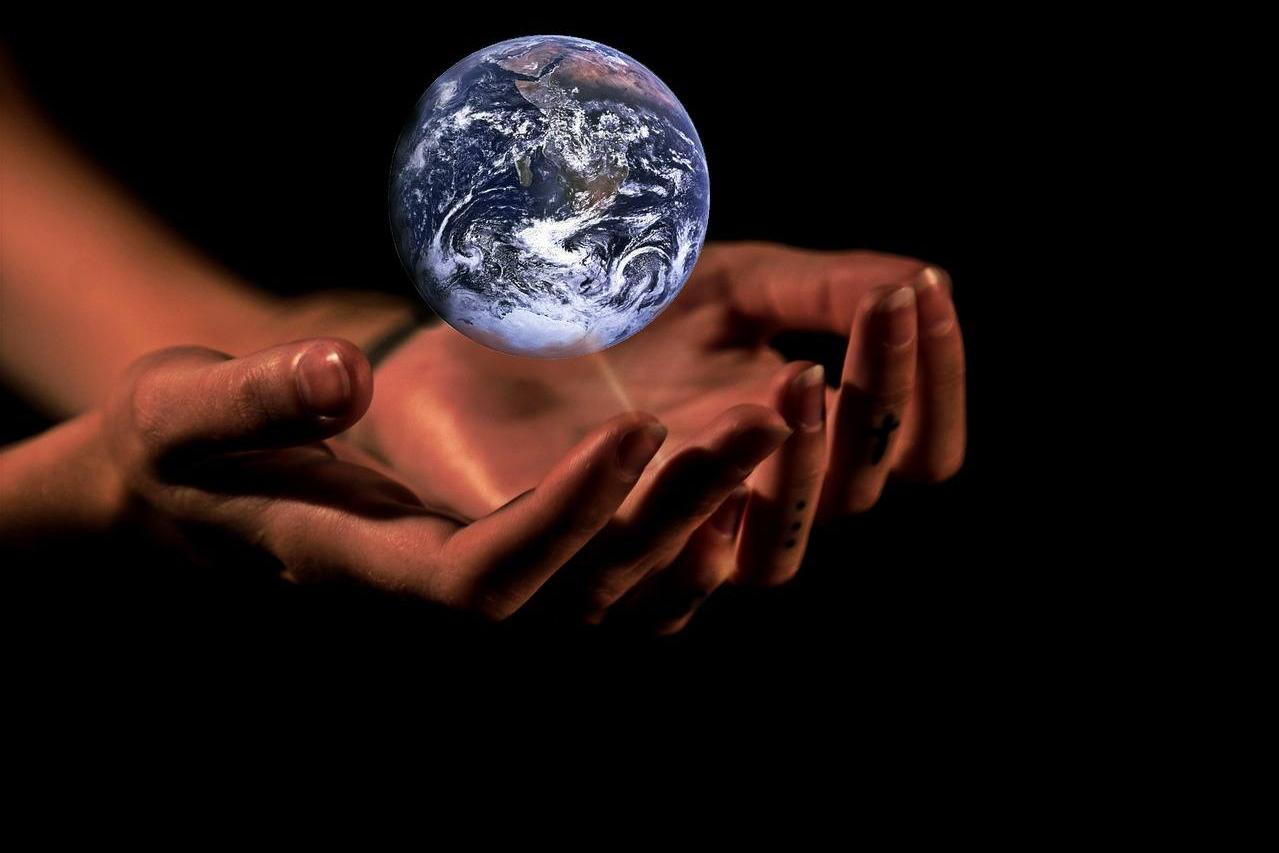
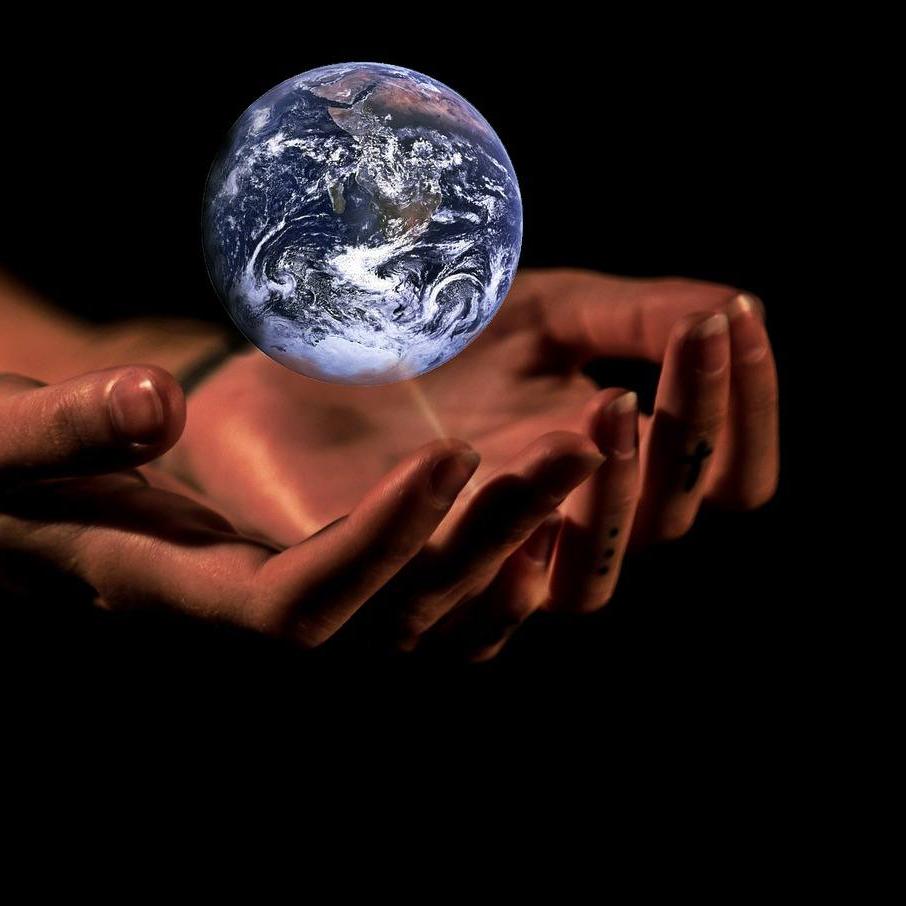
By Jill Phillips
Running a business, no matter how small it is, can be both expensive and harmful to the environment. A lot of money is often wasted on transport, inefficient technology, expensive utilities and so on. However, there are always ways to cut those costs and be eco-friendly in the process. Read on to find out for five ways your small business can save on technology costs.
1. Go green in the office
There are many ways to go green in your office. For starters, stop using paper, so you can cut costs and gain some environmental credibility. Paperless work was just a dream not too long ago, but now Google Docs and other apps make sharing and collaborating easy without printing on paper.Rather than discarding old electronics and other items other people can use, donate them to charity. You can reduce the environmental impact of your business and improve your public image while saving money through tax write-offs.
You can also make your business greener by using electronics that come with an efficient Energy Star Rating. Save even more money on utilities by using energy-efficient light bulbs and installing programmable thermostats that optimize the climate inside your company offices.
Other cost-cutting measures that also increase your business’s environmental compatibility include, for example, installing a water filter so you and your team can stop using bottled water. As you can see, you go green in different ways – just think about what you can also do.
2. Leverage cloud technologies
Cloud technologies make data and software services more accessible than ever. Regardless of whether you operate a physical or online store, you need access to servers and applications that make your organization efficient and reliable. Rather than running an elaborate IT infrastructure with expensive servers and networking equipment, you can trust cloud service providers to provide secure accounting and web hosting services for an affordable monthly or annual fee.
Your company also needs online file storage to enable your team to share information and collaborate on projects. Your cloud services can scale as your business grows, eliminating the fear and cost of expensive software and hardware replacements and upgrades.
Aside from security and affordability, cloud technologies enable the automation of many marketing and sales tasks and provide for customer service and support after the sale. You can also leverage cloud technologies to reduce your labor costs by expanding your workforce to include talented remote workers from anywhere in the world.
3. Cut traveling costs
Business travel expenses tax your budget and contribute to environmental problems such as pollution and noise. Regardless of whether your company depends on ground or air travel, you can use technology to reduce its cost. High speed, secure Internet connections enable team members to communicate among various offices and remote locations as if they worked together in a single room, without burning fuel and accruing travel time.
Virtual technologies such as video conferencing supported by tools such as Yugma and Meeting Burner provide robust platforms that make meetings inexpensive and productive. Meeting Burner requires no software downloads and allows participants to share their screens and ideas. It integrates with Skype, giving you many communication options.
Less travel, less pollution, less costs, more productivity.
4. Consider telecommuting
Consider the cost commuting adds to the environment and your company. Workers spend hours driving to and from their job, and their vehicles emit gasses that pollute the air and damage the ecosystem. At the same time, your company must spend money acquiring facilities large enough to house work areas for every team member. Utility bills and taxes add even more to the cost of maintaining this traditional employment model. What you can do instead is use telecommuting to cut costs and improve employee satisfaction.
Employees working from home reclaim the time formerly spent on their commute and reduce their environmental impact. Rather than use company space, they use their home office or alternate location as a work area. As a result, your firm requires less space which means lower rent and utility expenses.
This way, employers reduce their overhead, while employees get extra time for their private lives. As a result, employees enjoy an improved work-life balance that makes them happier and more productive at work.
The U.S. government passed the National Telework Initiative to encourage employers to adopt telecommuting as their new employment model, so let some of your employees work from home and see how your company saves money and improves productivity.
5. Educate your employees
People become more engaged in an effort when they fully understand it, so try to promote a culture that encourages environmental awareness and cost-cutting technological tools. You simply cannot do it alone.
When your entire team works together, you can achieve impressive results. Start by holding a meeting to launch your program to save energy and the environment. Establish written guidelines in an electronic format to remind your team members of what you expect from them. Reinforce your effort by distributing relevant articles and videos that show them how to achieve further savings on technology costs. Don’t forget to hold scheduled meetings for brainstorming that can result in new ways to save money and the environment.
Final words
Consider using the above five ways to save on technology costs for your company – the success you achieve might surprise you. If you integrate environmental responsibility and common-sense practices, you will enable your business to save money, become more efficient and eco-friendly. Those are all good reasons to get started today.
Image credit: Pixabay
Jill Phillips is a freelance writer and content manager at assignyourwriter from Buffalo, NY. She is an aspiring entrepreneur and tech enthusiast, who loves to share her insight on various topics. When she is not writing, Jill enjoys taking photos and hiking with her dog. Connect with Jill via Twitter @jillphlps
The Future of Cities is Bright
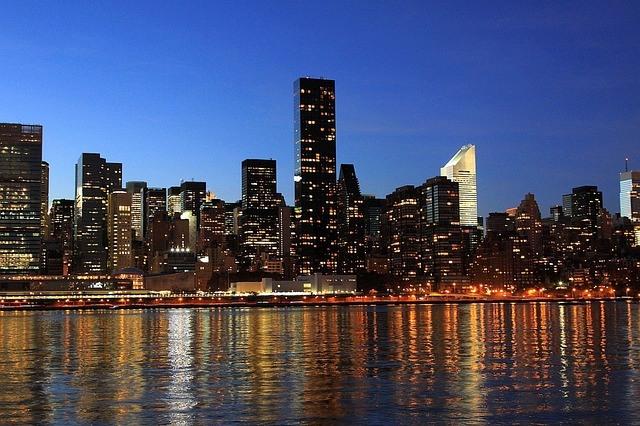

By Tim Fleming
What does the “city of the future” look like?
In an era of rapid technological advancement and increasing urbanization, it’s a fair question. Eighty percent of the U.S. population already lives in large cities* – each with a smartphone, wearable or other device in hand.
As such, city officials are beginning to piece together how those bits of technology can connect with assets like energy meters, garbage cans, street lights, traffic lights, water pipes and more. But, how do we make it all work together? By building a truly smart city.
A truly smart city is one with seamless connectivity that solves local problems and provides its inhabitants with safety, cleanliness and the most efficient ways to get from Point A to Point B. It’s a city that optimizes how we use valuable resources to help improve quality of life, positively impact our planet and open new economic opportunities. A truly smart city provides tremendous opportunities for its citizens and beyond.
Working with city officials, AT&T is helping to make cities cleaner, safer and stronger by providing secure connectivity and technology solutions that can help cities connect the dots – leading to environmental, social and economic benefits. As such, we are piloting a Smart Cities framework in several initial spotlight cities and communities around the country, including Atlanta, Chicago, Dallas, the Georgia Institute of Technology, Miami-Dade County (Florida), Chapel Hill (North Carolina) and Montgomery County (Maryland).
And as of last week, we can add Columbus, Ohio, to the list of cities we will support. Last week, U.S. Transportation Secretary Anthony Foxx announced Columbus as the winner of the Department of Transportation (DOT) Smart City Challenge – a competition between 78 cities aiming to define what being a “smart city” means.
As part of its sponsorship, AT&T is giving the winning city up to $1 million in connectivity services – cellular, Wi-Fi and wireline – as well as hardware, products and services to support the development and deployment of smart city solutions in Columbus.
As noted by the U.S. DOT: “The city proposed to deploy three electric self-driving shuttles to link a new bus rapid transit center to a retail district, connecting more residents to jobs. Columbus also plans to use data analytics to improve health care access in a neighborhood that currently has an infant mortality rate four times that of the national average, allowing them to provide improved transportation options to those most in need of prenatal care.”
We’re looking forward to working hand-in-hand with the city of Columbus and Mayor Andrew Ginther to help it solve real environmental and social challenges in order to become the city of the future.
*Urban America: U.S. Cities in the Global Economy; McKinsey Global Institute; April 2012
Image credit: Pixabay
Tim Fleming is Director of Sustainability Operations for AT&T.
3p Weekend: Recycled Art Installations From Around the World


With a busy week behind you and the weekend within reach, there’s no shame in taking things a bit easy on Friday afternoon. With this in mind, every Friday TriplePundit will give you a fun, easy read on a topic you care about. So, take a break from those endless email threads and spend five minutes catching up on the latest trends in sustainability and business.
It's no secret that the world has a staggering waste problem. And while companies, governments and NGOs are developing waste-diversion solutions for everything from electronics to textiles, this work is done largely out of view.
And although art and sculpture can't capture enough waste to change the world, its irrefutable role as a thought-provoker is far more than the sum of its parts. With that in mind, this week we tip our hats to artists who set out to make a statement with their work and inspire a brighter future. Trust us, you'll be sharing these on social all weekend.
Give A Sh!rt
Last month Savers, also known in Canada and parts of the U.S. as Value Village, took to Toronto to bring attention to the environmental impact of clothing waste. The Give A Sh!rt installation debuted on June 22 in Yonge-Dundas Square, often called the "Times Square of Canada."
The Savers team replaced 20 water fountains with “fountains” of clothing for a powerful visual display. They also handed out reused T-shirts to encourage consumers to #GiveAShirt and commit to make their next T-shirt a reused one.
Throughout the day, the team engaged with tens of thousands of visitors to drive social conversation. The experiential event "successfully increased awareness around the environmental impact of the clothing industry and inspired the Toronto community to #GiveaShirt about their clothing footprint," Savers said.
Funnel Tunnel
In 2014, Houston artist and sculptor Patrick Renner transformed hundreds of pieces of recycled wood into this hypnotizing work he dubbed the Funnel Tunnel. The piece became a staple in Houston's Montrose neighborhood before its steel frame was dismantled and moved to New Orleans last summer.
The colorful, reclaimed wood pieces were made available for fans of the installation, the Houston Chronicle reported last year. And hundreds showed up to claim their Funnel mementos. The nearly 180-foot sculpture was trimmed down to 155 feet and now stands at the corner of Poydras St. and S. Claiborne Ave. in New Orleans, reports the Times-Picayune.
Upcycled entrance: 2016 Venice Architecture Biennale
Alejandro Aravena, curator of the 2016 Architecture Biennale in Venice, is no stranger to large-scale art. And for the entrance to one of the main event halls, the Chilean architect took on an upcycled twist.
His massive installation in the introductory hall of the Arsenale building is made from 90 tons of waste generated at last year's Art Biennale, reports architecture magazine Dezeen. Aravena and his team at Elemental incorporated nearly a mile of recycled scrap metal and over 100,000 square feet of paperboard into the work, reports ArchDaily.
"There are several battles that need to be won and several frontiers that need to be expanded in order to improve the quality of the built environment and consequently people’s quality of life," Aravena said in a statement after being named curator of the Biennale. "We would like to show that ... there is not only need but also room for action."
This installation, along with hundreds of other architecture exhibits, will be on display in Venice until Nov. 27.
Perspectives: Chiharu Shiota
Japanese performance and installation artist Chiharu Shiota works in found materials often. This piece, displayed at the Arthur M. Sackler Gallery in Washington, D.C., is made from shoes and notes Shiota collected from city streets.
Fittingly entitled "Perspectives," the work ran for nearly a year before it wrapped last June. Shiota, who lives and works in Berlin, is now hosting five solo shows across Europe.
Red, Yellow and Blue
Sculptor Orly Genger specializes in using repurposed nautical rope to transform public spaces into intricate and gargantuan works of art. And her 2013 exhibition in New York City's Madison Square Park was the knit heard round the world.
Made up of 1.4 million feet of repurposed rope, the installation weighed a staggering 100,000 pounds, Urbanist reported. The red-, yellow- and blue- colored rope, which Genger treated with paint, wound its way through the park in what quickly became a favorite for Manhattanites and tourists alike.
The exhibition wrapped in the summer of 2013. But you can catch a similar public sculpture from Genger at the Waller Creek Conservancy in Austin, Texas, until February.
The Global Chess Board
On June 6, University of the Aegean in Mitilini, Greece, opened its poignant exhibition "The Global Chess Board" to celebrate World Environment Day.
Over the past year, the region has seen one of the greatest migrations in human history. "The personal drama encapsulated in each individual arriving has unfolded on the beaches across the islands of the Aegean Archipelago and left behind, bearing silent witness to lives changed forever, are their lifejackets," the university said in a statement announcing the installation.
The two basic materials used in the installation are recycled -- waste paper from university students and used refugee life jackets sourced from the Municipality of Lesvos. The two highly symbolic materials join to create an interactive installation meant to catalyze the fight against waste and inspire greater support for refugee communities.
City of Dreams Pavilion
Each year, a group of engineering and architecture organizations host a design challenge for the chance to create an interactive pavilion on New York's famous Governors Island. And last year, the City of Dreams Pavilion was made almost entirely from recycled materials.
Created by designers at Izaskun Chinchilla Architects of Madrid and London, the work is made of found waste materials like umbrellas, bike parts and household items, Urbanist reported. This summer, the island plays host to a treehouse made from eco-friendly wood.
Falling From Above
This permanent, three-part art fixture in downtown Brisbane, Australia, is intended to bring organic elements to a highly-trafficked commercial plaza. Made from recycled western Australian jarrah wood and steel, the pieces are meant to look like they're 'falling' through the openings between the tall buildings above.
You can see the works from Australian sculptor Stuart Green around the plaza at 275 George St. in Brisbane.
Transformer takeover
This symbol of monumental reuse is sure to delight both the young and young-at-heart. 24-year-old sculptor Danilo Baletic of Montenegro gained notoriety for his massive renditions of his childhood comic book heroes.
His "Transformers" sculptures -- made entirely from bulk scrap metal pieces like car parts -- have made their way through Montenegro, including its capital city of Podgorica, as well as the Serbian capital of Belgrade and Maribor in Slovenia's wine country.
Smart Tree
Nari Ward makes sculptural installations from materials he collects in his own neighborhoods. It begin in his original hometown in Jamaica and continued in various neighborhoods in New Jersey and New York. He now does most of his streetside collecting in Harlem, where he has lived since 1983.
His latest installation is Smart Tree on the Highline, an elevated park on retired railway tracks that's fast becoming a Lower Manhattan fixture. The sculpture, shaped like a smart car, stands up on cement blocks and is surrounded by used tires and other waste materials. An apple tree grows from its roof to symbolize rebirth and communion with nature.
The work will be on display on the Highline until March of next year.
Image credits: 1), 2) and 3) Courtesy of Savers/Value Village; 4) Flickr/Jan Carson; 5) Jacopo Salvi for La Biennale di Venezia; 6) Andrea Avezzù for La Biennale di Venezia; 7) Flickr/Amanjeev; 8) Flickr/Nan Palmero; 9) University of the Aegean; 10) Flickr/Jessica Sheridan; 11) and 12) Brisbane City Council via Wikimedia Commons; 13) Flickr/Milos Milosevic; 14) Flickr/Ron Cogswell
VW Aims to Remake Its Green Empire (and the Electric Car Industry)
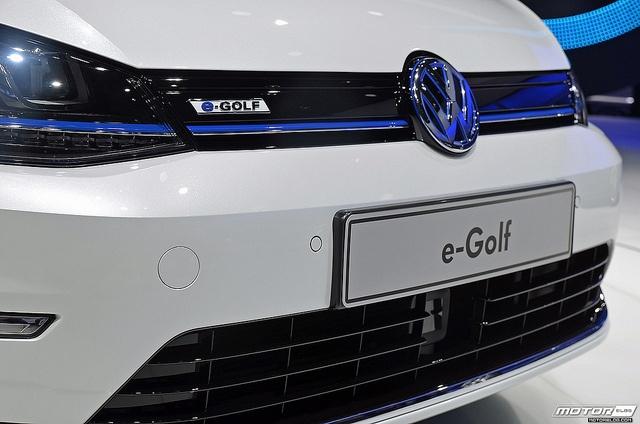

Volkswagen AG's recent announcement that it plans to remake itself into the world's top electric car producer isn't exactly surprising news. With its mile-long list of legal problems from last year's emission scandal and its much longer history of cutting-edge car production, it makes sense for the company to focus on electric car production. Even Elon Musk and a consortium of environmental gurus felt that would be a good fit.
But is it a sustainable choice for Germany's flagship car manufacturer? Green Car Reports senior editor, John Voelcker, points out that VW will have stiff competition based on next year's projected models. The VW e-Golf will have to go some distance to catch up with Chevy's 2017 e-Bolt, which is estimated to double the e-Golf's range. And with more manufacturers getting into the EV game, it's likely the bar for range will raise even further.
The trend is also likely to increase the demand for better, stronger batteries that can support longer distances and fuel even greater jumps in technology. And that's something VW needs before it could outdistance competitors like the Chevy Bolt.
VW's answer to that problem, apparently, is to become the global supplier for electric car batteries. It could cost the automaker as much as $11 billion to build the factory, which would would likely be based in the German state of Lower Saxony. The state owns 20 percent of VW stock, and the new factory would mean increased jobs and services for local communities that already supply as much as 100,000 VW workers.
But that is only part of Volkswagen AG's plan. As Autoexpress U.K. reported last week, the company also plans to build 30 different electric models over the next decade. Counting stock from Porsche and Audi, that could amount to as much as 1 million cars.
Those are tall goals, given the company's legal woes. The $15 billion court settlement reached this week with the United States and California requires VW to shell out $2 billion over the next decade to promote clean energy vehicles. And what will probably sting the most is that the money won't go directly into VW's business, but will help to promote the industry as a whole. That means it will benefit its competitors' success as much as VW's.
"You're looking at $15 billion, but you're also going to have reputational damage and possibly lost market share because the money will promote technologies made by other companies," Maryann Keller, an auto industry specialist, told Bloomberg News on Wednesday.
But that isn't how Volkswagen CEO Matthias Muller sees the company's prospects. The emissions scandal and all of its financial and legal baggage, he says, is the new impetus to change.
"We are using the current crisis to fundamentally realign the Group," Müller told EU parliamentarians in Brussels in January. "I strongly feel we now have the chance to build a new and better Volkswagen."
It's that kind of glass-half-full viewpoint that may just get VW through its challenges. And it could help build a strong electric car industry as it does. It's too early to tell, however, whether consumers will follow.
Image:Flickr/MotorBlog
Off-Grid Electric Will Power African Entrepreneurs With Solar
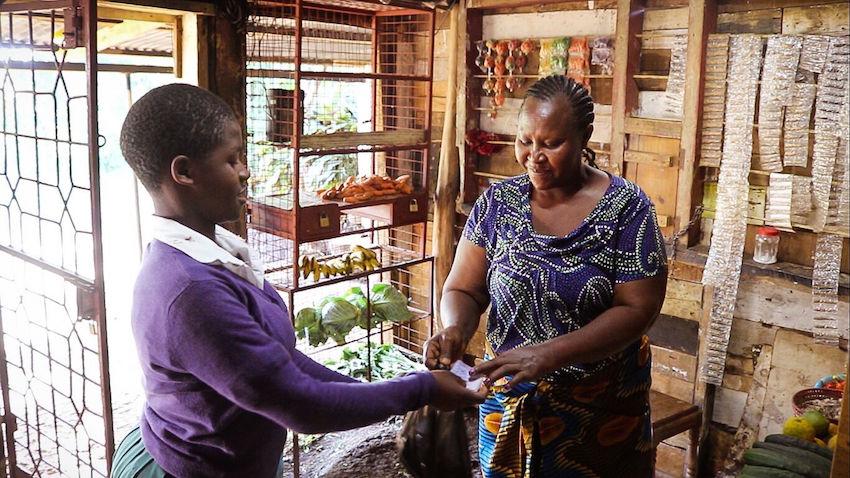

Nearly 600 million people in sub-Saharan Africa lack access to electricity. In rural areas, the electrification rate is as low as 14.2 percent. Those with access often face high prices for an inferior power supply or have to rely on an under-developed system that is not able to truly meet their needs. This presents a huge problem for local entrepreneurs who are working to grow their businesses in the region.
In an effort to tackle this issue, Off-Grid Electric plans to expand beyond just servicing households and will soon provide solar power to local businesses starting in Tanzania. Kazi na Zola ("Work with Zola" in Swahili) is a full suite of solar appliances designed to help rural entrepreneurs create successful businesses and generate income.
The company announced the project at U.S. President Barack Obama’s 7th annual Global Entrepreneurship Summit (GES) in Palo Alto, California. This year’s GES focused on generating new investments for entrepreneurs and building entrepreneurial ecosystems around the world.
“Africa is a continent of entrepreneurs. From the farmer selling her harvest, to the salon owner serving his neighborhood, to the shopkeeper charging mobile phones, these are the businesses that are the lifeblood of local communities,” said Xavier Helgesen, CEO and co-founder of Off-Grid Electric.
“We built this offering as a tool to enable entrepreneurs to start and grow the businesses they've always wanted to, but haven't had the power to be able to."
Kazi na Zola is a business in a box. It’s designed to give local self-starters the tools they need to run their businesses completely on solar, whether that’s a barbershop, charging station, bar or restaurant. The tailored offerings include tools such as phone charging strips and entertainment systems.
The product is financed over time via small micro-payments collected via mobile, allowing first-time entrepreneurs to generate income right away.
The effective development of Africa’s energy resources could unlock huge gains across the economy. Modern, high-quality and reliable energy provides things like lighting, heating, transportation, communication and mechanical power. We take these things for granted in the West, but they support education, better health, higher incomes and all-round improvements in quality of life.
Off-Grid Electric is the world’s first massively-scalable, distributed energy company. It provides clean, affordable and transformative energy directly to households that have never had access to reliable electricity at a rate of 10,000 new households per month. The company’s solar leasing model removes risk for customers, offering the latest in solar technology for less than or equal to a customer’s average energy spending.
The company's mission is to power the world with clean energy within the next decade through state-of-the-art solar, radical affordability and a holistic, innovative model. Off Grid-Electric delivers solar power at a price that customers can afford without sacrificing quality.
For the same amount that they spend on kerosene or candles, people can afford clean energy from Off-Grid that provides 25 times more light and can power additional appliances like TVs and radios. Based on next-generation lithium batteries, hyper-efficient appliances and clever electronics, the company has reimagined what is possible for autonomous solar systems.
Not only does this project increase energy access for households and business throughout the region, but it also contributes to the reduction of greenhouse gas emissions, displaces kerosene which pollutes the air with harmful particles, and promotes financial inclusion. All of these elements are crucial to economic and social development.
Images courtesy of Off-Grid Electric
Cambodian Garment Workers Quickly Losing Their Rights
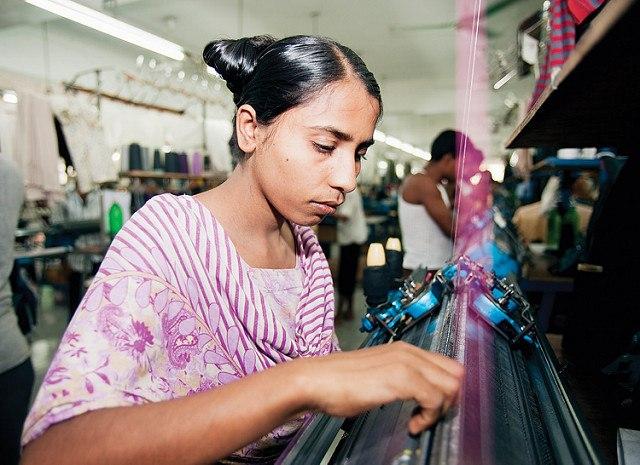

The garment industry has a massive impact throughout the developing countries that have become integral to its supply chain. And usually not in a good way.
For example, it took the 2013 Rana Plaza factory collapse for the global garment industry to take action in order to increase workers’ rights in Bangladesh. Meanwhile, Cambodia, home to many clothing companies’ suppliers, has seen its garment industry become its largest export sector over the past generation.
But Cambodian workers do not necessarily reap the economic benefits from the country’s growing garment trade. Relations between workers, factory owners and the government have long been volatile. And conditions are not getting better, according to a documentary that highlights the daily struggles of garment workers in Cambodia and other developing countries where employment options are limited.
The 32-minute film, "Living Wage Now," which was produced by the NGO Asia Floor Wage Alliance (AFWA), takes a harsh view of the substandard conditions in which many garment workers toil throughout South and Southeast Asia. Long hours and uncomfortably stuffy shop floor environments are exacerbated by physical violence, sexual harassment, the denial of meal or bathroom breaks and, in the worst cases, death. One Cambodian worker interviewed by the film crew said her $160 monthly salary is usually not enough to make end’s meet. From other workers’ points of view, she is one of the lucky ones — many make even less.
Despite the poor conditions, low wages, and overall deplorable human rights violations that AFWA and other labor rights groups documented extensively, workers in Cambodia have had a hellish time persuading the government to stand up for the rights. The central government has been in dire financial straights for years. And from its point of view, it has no interest in risking a lucrative industry departing its shores for even cheaper markets (for example, Myanmar and some African nations).
The result is years of tension and frequent violence between Cambodia’s estimated 700,000 garment workers and the Phnom Penh government. Strikes have long been in the norm in Cambodia, especially after the garment industry picked up steam again after the 2008-2009 global financial meltdown.
But despite the constant back-and-forth of strikes and the government agreeing to raise wages, most garment workers still live on only a few dollars a day. At the same time, prices for everything from food to schooling continue to increase across Cambodia. In recent years, the clashes have become more violent as chanting and rock-throwing were returned by gunfire from police.
The protests didn't die down, however. And the government finally had enough. Last summer, the Cambodia’s parliament passed a trade union law that made it more difficult for workers to organize. It also strengthened the government’s right to punish and even liquidate unions that collaborated with groups judged to have planned “economic sabotage” or engaged in activities that would “threaten” the government’s security.
While that law was written vaguely, another law tightening regulations on NGOs was quite clear: NGOs and their employees can be subjected to jail, fines, expulsion and even property confiscation if their actions are viewed as threatening the state — or in other words, aligning with Cambodian labor activists. As The Economist reported, such tactics are a way to keep civil unrest at bay until the next parliamentary elections in 2018.
The global garment industry says it is aggressively tackling the problems festering in the factories that churn out fast fashion and high-end clothing. But as "Living Wage Now" suggests, many workers still don't benefit from these reforms. The focus on Bangladesh is noble, but Cambodian workers also deserve better wages and working conditions so another Rana Plaza does not occur in Southeast Asia.
Image credit: Flickr/Bread for the World
What Does Queer Allyship Have To Do With Sustainability?


Editor's Note: A version of this post was originally posted on Medium.
By Lily Laurence
This weekend, the San Francisco Bay Area celebrated Pride, along with many around the country and world. But on the heels of a rough season of public national transphobia and the horrifying events in Orlando, I’d like to take a moment to connect the dots between queer* rights and ecological sustainability.
When we engage in ecological sustainability work, we do it for other people. One of the key reasons we have an ecological crisis today is that our economic and regulatory systems do not recognize equal value among human beings. The “others” who will be impacted by pollution and resource extraction — those in other countries, future generations or those with less money — do not count, or do not count as much.
Following, when we “other” people of diverse sexual and gender identities through ignorance, silence or malice, we are complicit in a system of hierarchy which values some people more, or more completely. Human life matters. Life matters.
Consider also the quality of life — for example, employees’ experiences at work . Forward-thinking companies are just beginning to consider this as valuable and, further, connect it to productivity (think about natural light in 'well' buildings etc). Now think about being fearful of revealing your actual identity and lived experience in your workplace — or being denied access to workplaces at all. Powerful stuff.
Society loses out by excluding people. Research also shows that diversity of perspectives makes our organizational strategies stronger (think women on the board, involving communities and supply chains in design, etc.). But we do not yet have good social norms, or an evaluative systems to include or measure diversity or quality of experience in our “growth,” “profit” or “productivity” assessments. So, social issues sometimes feel like add-ons, or “nice to haves”… (sound familiar to ecological issues?). But we know the real bottom line value is huge.
When we stand up for respect for all people, cultivate a culture of respect, and value the diversity of humanity and quality of life, we actually lay the fundamental framework needed — the emotional, social, organizational, regulatory groundwork — to create an ecologically sustainable (even regenerative) society.
Universal human rights are a foundation for ecological sustainability.
Queer allyship is active. Where in your life and work can you make a tangible, measurable difference in spaces and in people’s well-being? Try getting comfortable discussing pronouns, and use gender neutral language. Don’t assume you know “by looking” who a person is. Learn about the “I’ll go with you” project and wear a button. Encourage HR departments you know to include allyship trainings and seek out queer employment programs. Donate money to organizations doing great work. Donate time to support those organizations. Educate yourself, your kids, your friends, and family on queer history, culture, and current issues.
Thanks for taking the time to read this. I welcome thoughts and dialogue about this and your experiences connecting the dots between ecological and social justice issues.
*queer is a term my community uses as an inclusive word, but not everyone likes this term, and it has its own fraught history. Labels are tricky so the most important thing is to listen to people, be willing to use the labels they use for themselves, and be willing to evolve the labels as their/your understanding changes…. the respect matters more than the label. An inclusive (but certainly not exhaustive) acronym I know (which also doesn’t mean “the best," or “use this one”, but is useful in understanding diversity) is something like LGBTQQIP2SAA:
- Lesbian
- Gay
- Bisexual
- Trans (-gender -sexual -woman -man -folks, diverse non-binary or gender non-conforming identities)
- Two Q’s for queer and questioning;
- I for Intersex, people with two sets of genitalia or various chromosomal differences;
- P for Pansexual, people who refuse to be pinned down on the Kinsey scale;
- 2S for Two-Spirit, a tradition in many First Nations that considers sexual minorities to have both male and female spirits;
- A for Asexual, people who do not identify with any orientation; and
- A for Allies, recognizing that the community thrives best with loving supporters
- *I was inspired to write on this topic by my friend Diana Tordoff, and a message about allyship she sent to a wide group of friends. I crafted this specifically for my workplace community, REV. We help organizations develop sustainability action plans, and realize the value of embedding sustainability into organizational culture. Colleagues at REV encouraged me to take this piece public, to share and offer dialogue on this more broadly. Now, I look forward to your thoughts.
Lily Laurence is a Sustainability Coach for REV, a San Francisco-based startup that empowers organizations to embrace sustainability as a platform for innovation and value creation.
Automakers Rev Up Recycling and Sustainability Efforts


By Charles Krome
The auto industry is inextricably linked to both the environment and the economy. And how the industry handles ecological concerns today is guaranteed to have a corresponding impact on society tomorrow.
While that may seem obvious, people don’t always stop to think about how deep the connection goes. It’s no longer just fuel economy and emissions rates that matter, as multiple stakeholders are working to develop a sustainable, yet profitable automotive marketplace.
When considering the ecological and economic impacts of the auto industry, we can look at a lot of fresh material — in every sense of the word.
Materials to reduce weight
Although this topic goes far beyond fuel-economy issues, that’s still the ideal place to start. For example, an increasing number of automakers are investigating the use of lighter materials to reduce the overall weight of vehicles, which is one of the top factors in fuel efficiency. One manufacturer is on the cutting-edge of progress here: BMW.
The brand may be better known for its premium sport sedans, but it’s also pushing the sustainability envelope with its electrified “i” vehicles, including the i3 EV and the i8 plug-in hybrid sports cars. Both showcase high-tech, highly-efficient powertrains. But what allows owners to really maximize efficiency is the vehicles' relatively low curb weights. For that, BMW builds those cars with plenty of carbon fiber reinforced plastic (CFRP).
The material is as strong as steel, according to the company, but it’s also 50 percent lighter. It’s 30 percent lighter than aluminum, too. Yet what may be more important than the benefits of CFRP is BMW’s economic commitment to bringing it to the mainstream, setting a great example for how companies can successfully integrate their environmental efforts into the rest of their business models.
Indeed, BMW invested $300 million to build the world’s largest carbon fiber plant — in Moses Lake, Washington — where the company projects it will add a total of about 200 jobs. Wondering what brought the Bavarian automaker to the state of Washington? It was attracted by the ability to source all power for the carbon-fiber production lines from sustainable hydroelectric sources.
Materials to reuse and regrow
Along with the new materials, automakers are looking at those that have been around for a while as well, whether they’re drawn from previously-owned products or from nature. This way, companies can move beyond reducing fuel consumption and help lower the significant amount of petrochemicals used in the plastic pieces of the vehicle itself.
Ford, for one, relies on natural-fiber plastics — derived from materials such as rice hulls and kenaf, a hemp-like plant related to the hibiscus flower—for items such as door panels and wiring harnesses. Ford additionally leverages soy-based foam for many of its seat cushions, instead of petroleum-based products. What’s covering the seats? Fabrics made from at least 25 percent post-industrial or post-consumer recycled content. Even the popular Ford F-150 pickup and Mustang muscle car offer seats containing Repreve — which are made entirely from recycled materials.
Of course, vehicles that specifically target green drivers offer similar benefits, but they can also raise the sustainability bar in the process. The Kia Soul EV, for example, recently became the first vehicle in the industry to be validated by Underwriters Laboratory (UL) for its environmental efforts. Kia’s key innovation: using 52.7 pounds of bio-based content to create 19 parts in the Soul’s interior, from its carpeting to its headliner.
Materials to recycle
Companies can also do their part to complete the automotive circle of life, by helping to make it easier for their vehicles to be recycled when they’re taken out of service. And again, there are benefits to both the economy and the ecology. Per the Auto Alliance of 12 global automakers selling in the United States, for instance, recycling cars and trucks at the end of their lives is a $32 billion industry that supports about 140,000 jobs across the country.
The impact on the environment is harder to measure, but one notable success story is the National Vehicle Mercury Switch Recovery Program. The deadly element was used throughout the industry before 2003, and this program has been responsible for collecting more than 6 tons of it, preventing the mercury from potentially being released into the environment.
Today, with the public and automakers alike realizing the need for more aggressive efforts, companies are proactively engineering their vehicles specifically for ease of recycling. This is especially true in countries such as Japan, which have strict national guidelines about the percentage of each vehicle that has to be recyclable.
Toyota is a case in point. It’s one of the many automakers, U.S. companies included, that provides dismantling instructions for recyclers, and it also has launched efforts to recover older materials and reuse them in new vehicles. This ranges from collecting discarded bumpers and using the processed material for “new” plastics to reusing materials from its hybrid batteries in the same way.
So, while fuel efficiency has been a concern for manufacturers and consumers for some time, even the most fuel-efficient vehicles in the world can be greener. It’s not just about what these cars can do. It’s also what they’re made of. The auto industry is making changes to drive the planet and the economy in a healthy direction.
Image credit: Pixabay
Charles Krome is an automotive expert and writer for CARFAX who stays up on the latest trends in sustainability and technology as they relate to car buying.
A Grand Strategy for Economic Prosperity and Security


By Mike Hancox
Twice in the 20th century, the United States led global efforts to address the great existential challenges of the day. In the 1940s with an economy reeling from the Great Depression and a generally isolationist attitude, the U.S. fought a war on three continents and led a global effort to defeat fascism, while simultaneously establishing the U.S. as the world’s leading economic power. After WWII, the U.S. headed up the global effort to contain and ultimately defeat the threat posed by the Soviet Union, while simultaneously creating an American middle-class and a level of shared prosperity never before achieved in human history.
Neither of these great victories occurred by accident or providence. They were both the direct result of grand strategies that drove policies and actions across both the public and private sectors.
The new grand strategy
In their recently published book, “The New Grand Strategy: Restoring America’s Prosperity, Security, and Sustainability in the 21st Century,” Joel Makower, Mark “Puck” Mykleby and Patrick Doherty present the case for a new grand strategy that will lead to global economic prosperity and security in the 21st century.
The authors explain how U.S. policy and actions taken to address the two great challenges of the 20th century tapped pent-up pools of demand to unleash economic growth. Not only to support our foreign policy and military objectives, but also to serve as a beacon of hope and aspiration for the rest of the world.
The authors thoughtfully outline a framework for a new grand strategy to address the great global challenges of our day by unleashing the current pent-up pools of demand in the U.S.
The great challenge of our time: “Global unsustainability”
Like fascism and communism in the last century – sustainability, climate action and economic inclusion are the existential challenges of the 21st century. Makower, Mykleby and Doherty explain four interconnected global dynamics that must be addressed to confront global unsustainability and insecurity.
- Economic inclusion: Globally, 3 billion people aspire to enter the middle-class in the next two decades. Our ability to accommodate these folks in the global economy has critical implications for the future of civil society and social stability.
- Ecosystem depletion: How we assimilate these folks into the global economy and the potential strain this growth will place on our fragile global ecosystem has huge implications for the future of our planet. The impacts of climate change are already outpacing predictions while natural-capital stocks are being depleted below recoverable levels.
- Contained depression: Consumer deleveraging and a generational shift in lifestyle preferences has led to a global suppression of aggregate demand. Consumer preferences have shifted such that pumping more money into the system through monetary and fiscal policies will have little lasting effect beyond propping up an unsustainable economy and adding to deficits.
- Resilience deficit: The systems, supply chains, and infrastructure connecting our communities and markets are fragile and prone to disruption. Today’s corporate value chains are designed to increase efficiency but have little redundancy or resilience. And it’s not limited to supply chains. Public infrastructure arrears in the U.S. alone stand at $3.6 trillion to get bridges, roads, railways, schools, ports, and airports that undergird the Cold War–era economic engine up to standard.
Pent-up pools of demand
To reboot the American economy and position ourselves as a global leader in confronting these four threatening dynamics and in addressing 'global unsustainability,' "The New Grand Strategy" calls for policies and actions that will tap into three existing pent-up pools of demand – walkable communities, regenerative agriculture and resource productivity.
The authors argue that with the right set of public sector policies and private sector actions these pools of demand can be tapped in a way that stimulates our economy – creating widespread opportunities for economic inclusion, while simultaneously making our economy and society more sustainable. These domestic policies and priorities would in turn become the basis for our foreign policy and military decision making framework.
- Walkable communities: Since at least WWII, we have designed and built most of our communities and cities for the automobile, not for people. As we have come to understand the negative economic, social, environmental and human health implications of this design, our societal preferences have changed. Aging baby boomers and millennials agree that walkable and bikeable communities are superior places to live. Unfortunately, the supply of affordable housing in walkable and bikeable communities is nowhere close to keeping up with current demand and the prices of housing in urban areas are skyrocketing.
- Regenerative agriculture: Today's food system was centrally-planned and is heavily subsidized by the federal government to meet the needs of mid-20th century. We have a food supply that is dependent on fossil fuels, rapidly depleting our topsoil, destroying our waterways, and highly susceptible to disruptive events. It provides us with cheap food, which in turn destroys our health and makes us obese. The benefits of transforming this system to a more resilient, regenerative, local, organic and farmer (not industry) centric system could not be clearer.
- Resource productivity: For more than two centuries, our manufacturing and industrial processes have treated non-renewable resources as if they were renewable. The good news is these incredibly wasteful processes create enormous opportunities for resource conservation and preservation. The better news is we are on the cusp of a manufacturing revolution that will radically transform how and where things are made, fixed, and reclaimed.
A call to action
Unfortunately, as the authors point out, we lack the political will and capacity to develop this new grand strategy in Washington. Leadership for developing and implementing a new grand strategy will come from the private sector and state and local governments, the authors predict. Then, hopefully, Washington will follow and take the lead.
In the meantime you can do your part: Read the book. Listen to the podcast. And become a leader in the movement.
Image: Edith Soto, Creative Commons on Flickr
Mike Hancox is the CEO of Skeo and the Host of the Infinite Earth Radio podcast. You can reach him at [email protected].